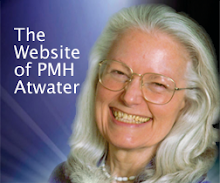Questioning the Afterlife
QUESTION
“I started reading about near-death experiences last summer, after I had a crisis of faith that sent me into a deep and fearful depression. I have since gotten a little better, but I still struggle with doubt and fear. I’m finding it very difficult to live my life with the dread that hangs over me at the idea that there might not be a God or life after death.
“I find the reality of NDE’s very comforting, and I want to believe that they really do offer evidence of the afterlife. I was reading an article on your links page that appears to be a scientific paper claiming that NDE’s can be induced (and therefore explained away), through the use of the drug ketamine. I had heard briefly about this on the IANDS website but hadn’t looked into it. I wanted to know, how true is it that ketamine can replicate all the meaningful aspects of an NDE (including veridical perception? - the article did not mention this)?
“Also, how reliable are accounts of veridical perception during NDE’s?
“I know it is wrong to want proof, and that conclusive proof can, of course, not be obtained until I actually do die, but I can’t live my life with this kind of fear. I need something to hold onto.
“Wow, I realize how desperate I just sounded and I’m sorry. But I would really appreciate your help.”.....Jane
ANSWER
I am not a physician, but I can say no drug that we know of can duplicate the complete near-death phenomenon. The paper on ketamine was published in the Journal of Near-Death Studies. I read it, but I do not remember which issue it was in. You can certainly inquire by contacting the International Association for Near-Death Studies (IANDS) at services@iands.org. I have spoken several times with the physician who wrote that paper and with others knowledgeable on the subject. What claims like this emphasize and try to explain are certain near-death imagery and initial changes afterward. You virtually never hear from anyone who addresses the entire phenomenon.
The entire near-death phenomenon includes the global experience/scenario pattern, the pattern of physiological and psychological aftereffects, and the implications. You cannot understand the phenomenon simply on the basis of comparing a few images and symbols, and a few brain responses and behavior changes. If you are really going to examine near-death, you need to look at the whole phenomenon and what is currently known about it. What may help you here is to read of Near Death Experiences: ">The Big Book of Near-Death Experiences. It updates the entire field worldwide with present research.
How reliable are third-party verifications of what experiencers see when out-of-body? The answer to that depends on whom you talk to. If you talk to fieldworkers like myself, I would say that such verifications occur so often they are commonplace, right-on, stunning. If you talk to skeptics, who come in years after an event occurred and demand to interview all significant parties, and refuse to accept verifications already received, then you run into a rail because, by then, many of the people involved are either dead or have moved away and cannot be contacted. Of course, the skeptic’s statement of “It can’t be proved” usually follows. So what do I do about this? I ignore the skeptics. I haven’t met one yet that was reasonable. They find what they find because that’s exactly what they want to find. Real skeptics, open skeptics, can be convinced of one thing and then turn around in their thinking when they find evidence to refute their original stance. Some of today’s best near-death researchers were once strident skeptics.
It is good to question. Add these to your questions: what is your protocol, how large is your study, does it address child experiencers as well as adults, do you depend only on questionnaires or do you do fieldwork, do you include in your investigation the feedback from significant others as well, did you do followups, how broad was your study, did you address cultural/regional/racial/religious differences or did you confine your study to one hospital in one part of the country one time? These questions are hugely important!!! So much of the work on either side of the “aisle” is incomplete or superficial. I am grateful that in 2010 some true scientists came forward with their work. But we need different and varied protocols. We need more people like me who say: let’s look again, there is more here than what appears at first glance or even beneath a microscope.
Near-death research does not answer the age-old question - is there life after death? It does, however, give startling, virtually overwhelming evidence to suggest. . . maybe there is.
Many blessings, PMH
Labels: Afterlife, Ketamine, NDE, OBE, Out of Body Experience, Research, Skepticism


2 Comments:
Jane, most of us go through one (or more) crisis of faith in our lives. When we believe in God and everything is alright in our lives, then everything is alright; but, when something unexpected, something painful and overwhelming enters our lives...we doubt. It is normal to doubt. This earthly body that covers the spirit does just that: covers it, nullifies it. Then, how can we "know" any better? How can we know for sure there is an afterlife? We cannot, that is why we doubt. This same 'doubting' used to happen to me, until I had a NDE.
So, if you know, or at least understand, that we have a spirit inhabiting this body, that animates it and makes it move, then, even as you tend to go through a faith crisis...you believe.
Continue reading good books on NDEs and, if it appeals to you, go to a good church where you 'feel at home' spiritually.
Blessings, Diane
Oh, Jane, I so understand how you feel...
I'm in a very similar state in my head and heart.
-Lauris
Post a Comment
<< Home